 Essay Writing Web
Essay Writing Web

 18-09-2024
18-09-2024
 www.essaywritingweb.com
www.essaywritingweb.com
Buffaloes are one of the most significant domesticated animals, especially in regions where agriculture plays a central role in the economy. Known for their strength, resilience, and adaptability, buffaloes have been a reliable partner for farmers across the world, particularly in Asia, Africa, and South America. Often referred to as "the living tractor of the East," buffaloes have historically contributed to the agricultural economy by plowing fields, providing milk, meat, and leather, and serving as a source of transportation in rural areas.
Buffaloes are characterized by their large, muscular build, with distinctive curved horns and a sturdy body, well-suited to performing laborious tasks. The water buffalo, one of the most common breeds, thrives in wet environments such as marshlands and rice fields, making it especially valuable in regions with abundant water resources. In contrast, the river buffalo is better adapted to drier environments. These animals have also been central to the dairy industry, as buffalo milk is highly nutritious and richer in fat and protein than cow’s milk. In many countries, buffalo milk is the preferred choice for producing dairy products like cheese, butter, and yogurt.
Aside from their agricultural uses, buffaloes are also valued for their hides, which are used in the production of leather goods. Buffalo meat, known for its rich flavor, is another source of income for farmers in various parts of the world. Despite their importance, buffalo populations face challenges due to modernization, urbanization, and environmental changes. However, conservation efforts and the recognition of their crucial role in sustainable agriculture ensure that buffaloes will continue to be an integral part of rural economies for years to come.
Buffaloes are large, robust animals known for their distinctive physical traits that set them apart from other domesticated livestock. Their strong, muscular bodies are built for endurance and hard labor, making them invaluable in agricultural tasks such as plowing and transportation. Adult buffaloes can weigh anywhere between 400 to 900 kilograms, depending on the breed, with males generally larger and more powerful than females.
One of the most noticeable features of a buffalo is its curved horns, which can vary in size and shape across different species. In water buffaloes, the horns tend to spread outward, while in other species like river buffaloes, the horns might curve inward. These horns serve as both a defense mechanism and a symbol of the animal's strength.
Buffaloes typically have thick, dark coats, often black or grey, which provide them protection from the elements. Their tough skin is resistant to harsh environmental conditions, and their coats help them survive in both wet and dry climates. Their large, sturdy hooves are designed for walking on soft, muddy terrains, particularly in areas where they work in rice fields or wetlands.
Buffaloes also have broad heads and powerful necks, which allow them to bear heavy loads and perform labor-intensive tasks. Their keen sense of smell and strong hearing help them detect threats in their environment. Despite their imposing size, buffaloes are known for their docile and calm demeanor, making them easy to domesticate and work alongside humans. These physical attributes contribute to the buffalo's indispensable role in agriculture.
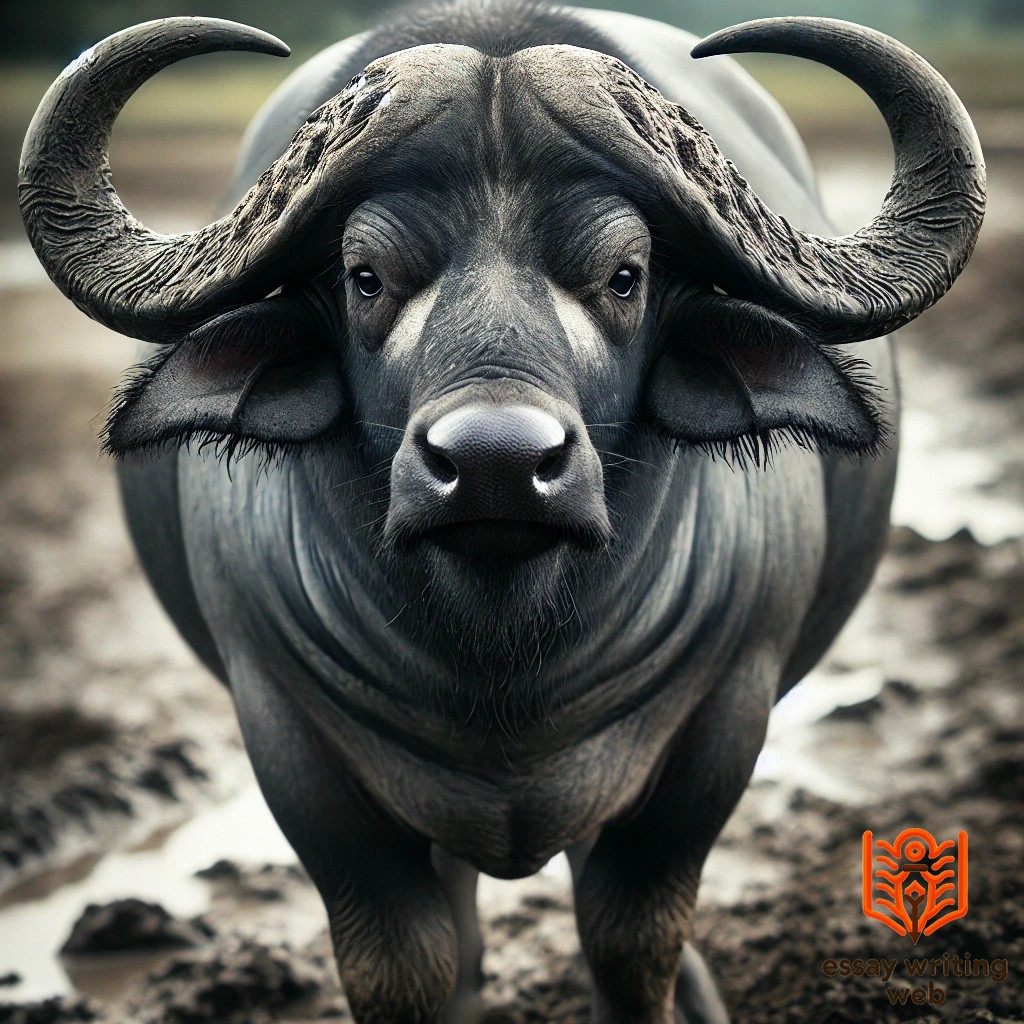
Buffaloes are classified into two main types: the water buffalo and the river buffalo. These two categories are further divided into various breeds, each adapted to specific environments and needs. Both types play vital roles in agriculture, dairy production, and transportation, especially in rural and agricultural economies.
The water buffalo, also known as the swamp buffalo, is predominantly found in Southeast Asia and parts of India. These buffaloes are adapted to living in wet, marshy environments and are commonly used for plowing rice fields. Water buffaloes have large, wide horns that spread outward, and their strong, heavy bodies make them ideal for labor-intensive tasks. They are also valued for their meat and leather, though their milk is less commonly used for commercial purposes compared to river buffaloes. Water buffaloes are generally calm, slow-moving animals, which makes them easy to handle in farming activities.
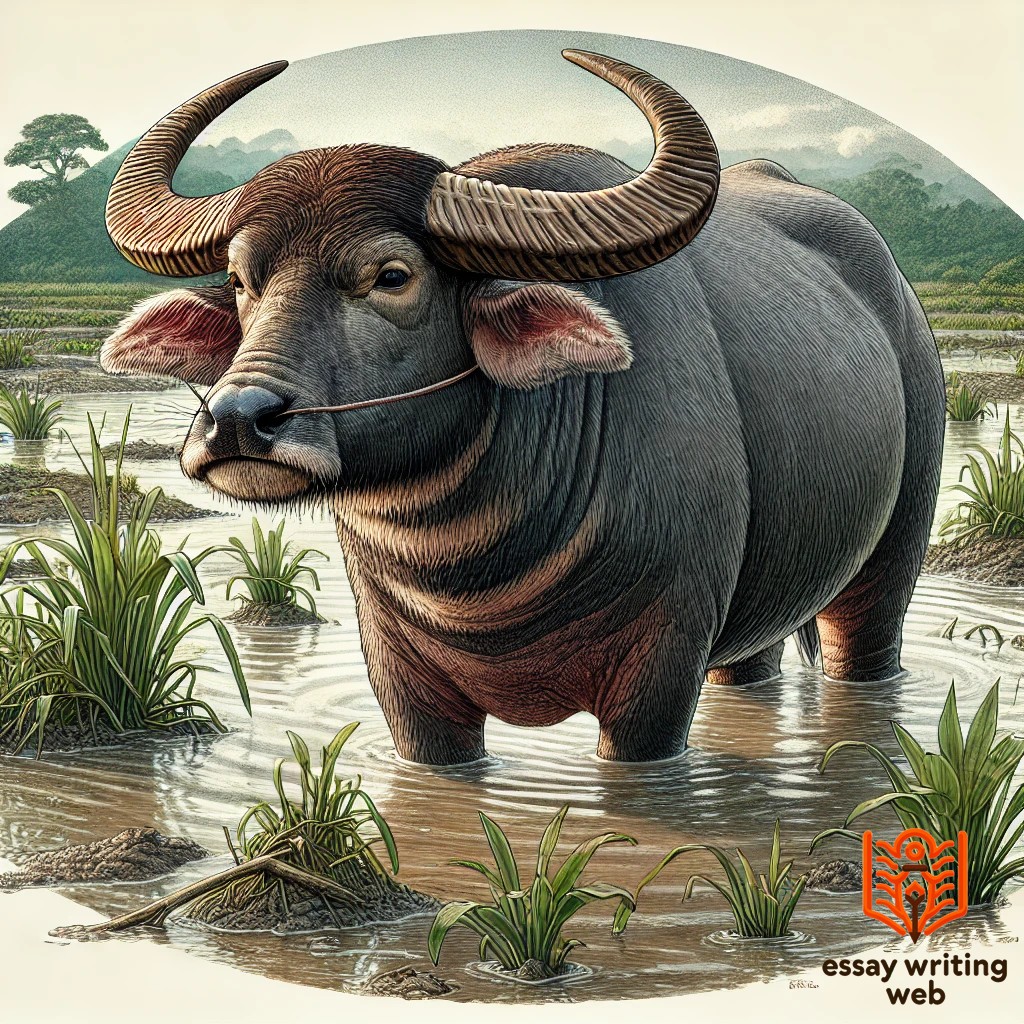
River buffaloes are mostly found in South Asia, particularly in India, Pakistan, and parts of the Middle East. They are primarily bred for dairy production, as their milk is richer in fat and protein compared to cow’s milk. This makes river buffaloes highly sought after in the dairy industry for products like cheese, yogurt, and butter. These buffaloes have a sleeker appearance than water buffaloes, with horns that tend to curve inward. River buffaloes are adapted to drier climates, making them more versatile in areas with less rainfall.

Both water and river buffaloes are integral to the economies of many countries, particularly in Asia, where they contribute to both food production and labor. Their resilience, strength, and adaptability make them indispensable assets in agriculture and farming.
Buffaloes are versatile animals that thrive in a variety of environments, ranging from wetlands to arid regions. Their adaptability allows them to inhabit different geographical areas, with water buffaloes and river buffaloes favoring distinct types of habitats.
Water buffaloes, as their name suggests, are primarily found in wetlands, marshes, and areas with abundant water. They are well-adapted to hot, humid climates and are commonly seen in countries like India, China, and Southeast Asia, where rice paddies and swampy areas provide ideal conditions. These buffaloes are known for their ability to submerge themselves in water to regulate body temperature and avoid heat stress. Their broad hooves allow them to move efficiently in muddy terrain, making them invaluable for agricultural activities in regions with waterlogged fields.
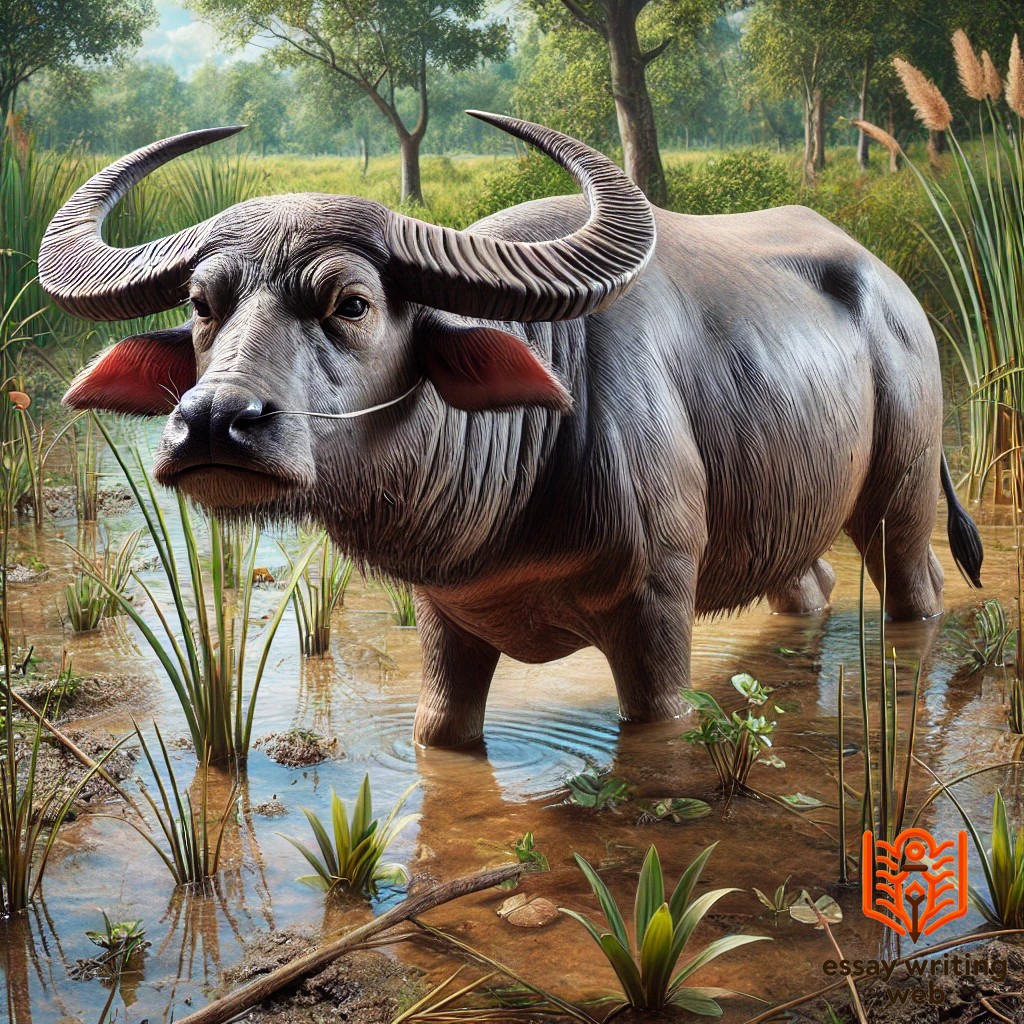
River buffaloes, on the other hand, are more suited to drier environments and are commonly found in South Asia, the Middle East, and Mediterranean regions. They prefer river valleys, grasslands, and semi-arid zones, where they can graze on the vegetation available. Unlike water buffaloes, river buffaloes are not dependent on constant access to water but still require rivers or water sources for drinking and cooling off.

Both types of buffaloes are integral to their respective environments, providing labor, milk, and meat in regions where agriculture is a primary livelihood. Their ability to thrive in diverse habitats underscores their importance in supporting rural economies across the world.
Buffaloes have played a vital role in agriculture for centuries, especially in countries where traditional farming methods are still prevalent. Their strength, endurance, and adaptability make them indispensable to rural economies, particularly in Asia, Africa, and parts of South America.
One of the primary role’s buffaloes play in agriculture is as a draft animal. They are commonly used for plowing fields, particularly in rice-growing regions where their ability to navigate wet, muddy fields makes them more effective than tractors. Their broad hooves allow them to tread through waterlogged soil without sinking, making them ideal for farming in areas with challenging terrain.
In addition to their role as draft animals, buffaloes are significant contributors to the dairy industry. Buffalo milk is highly valued for its rich fat content and is widely used in the production of dairy products such as butter, cheese, and yogurt. In many parts of the world, buffalo milk is preferred over cow’s milk for its creamier texture and higher nutritional value.
Buffaloes also contribute to agriculture through their by-products. Their manure is a valuable natural fertilizer, enriching soil fertility and improving crop yields. Additionally, buffalo hides are used in the production of leather goods, providing an additional source of income for farmers.
In regions where mechanization has not fully replaced traditional methods, buffaloes continue to be an essential part of agricultural practices. Their versatility, resilience, and economic value make them a cornerstone of sustainable farming in many rural communities.
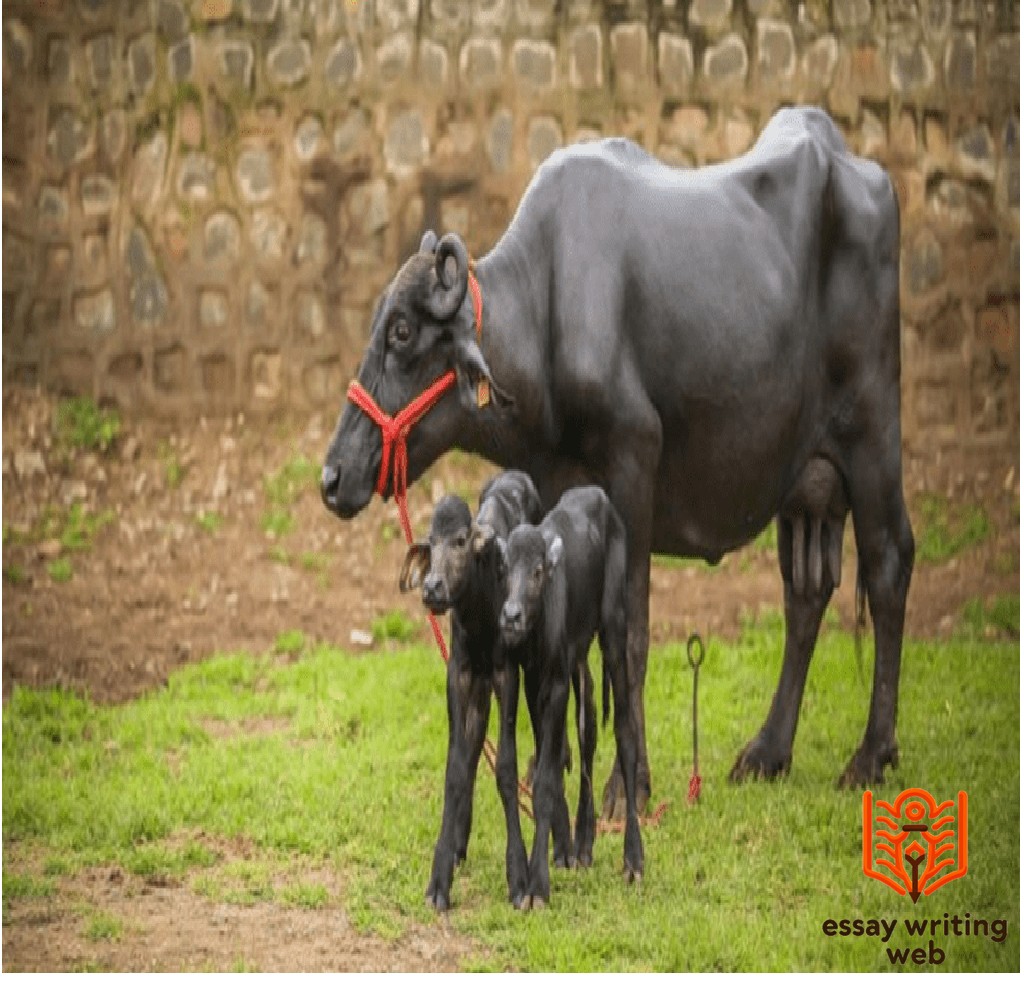
Buffaloes have long been revered as invaluable assets in agricultural societies, particularly for their contribution as a source of milk. Known for producing rich and creamy milk, buffaloes play a significant role in dairy farming, especially in countries like India, Pakistan, and Italy, where buffalo milk is a staple.
Buffalo milk is renowned for its higher fat content compared to cow's milk, making it ideal for producing a variety of dairy products. This milk is commonly used to make cheese, yogurt, and butter, which are essential components of many traditional diets. In regions where buffalo farming is prevalent, households often rely on this milk not only for nutrition but also as a source of income. The sale of buffalo milk and its by-products supports many families, contributing to local economies.
In addition to its economic significance, buffalo milk offers several health benefits. It is rich in vitamins, minerals, and protein, making it an excellent choice for individuals seeking to enhance their diet. Moreover, its higher calcium content supports bone health and development.
The care and management of buffaloes are crucial to maintaining milk quality. Farmers invest time and resources in ensuring their animals are healthy, well-fed, and properly housed. As a result, the bond between farmers and their buffaloes extends beyond mere utility; it embodies a relationship built on mutual benefit and respect.
In conclusion, buffaloes serve as a vital source of milk, providing nutrition and economic stability to countless communities around the world. Their importance in agriculture cannot be overstated, highlighting the need for sustainable practices in their management.
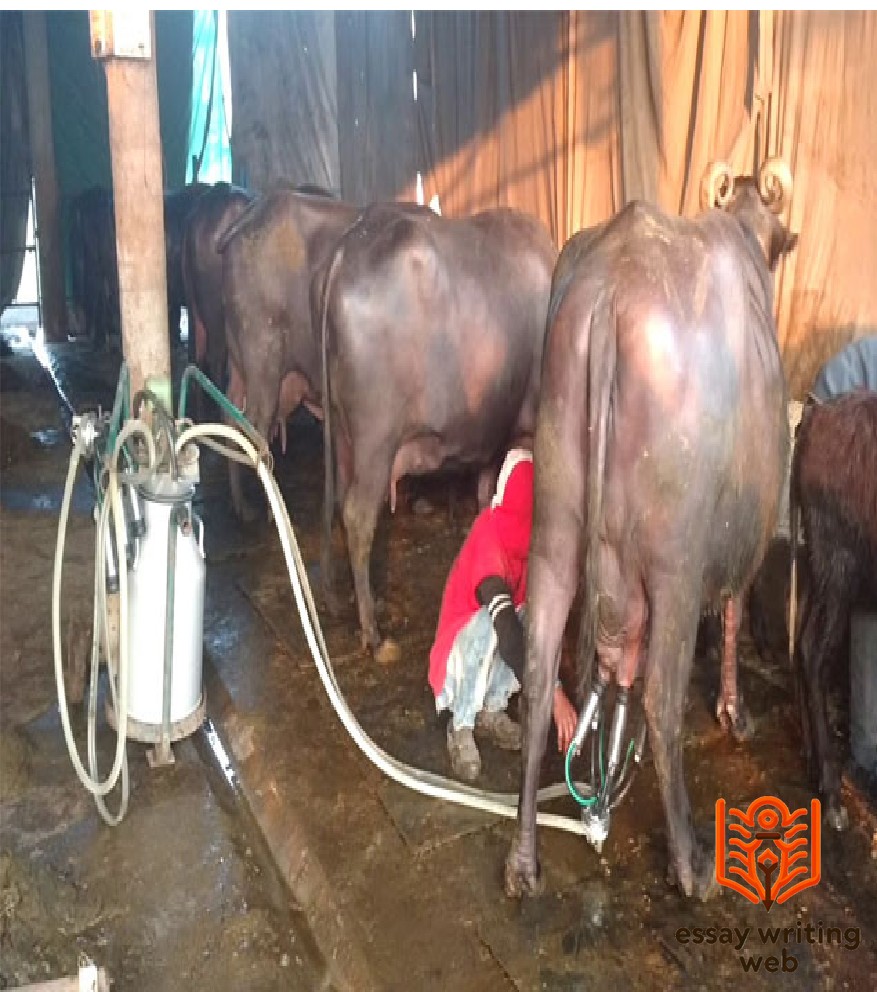
Buffaloes play a crucial role in the economies of many countries, particularly in regions where agriculture forms the backbone of livelihoods. Their economic significance stems from various factors, including dairy production, labor, and contribution to agriculture.
Primarily, buffaloes are renowned for their high-quality milk, which contains more fat than cow's milk. This makes it ideal for producing dairy products like cheese, yogurt, and ghee, which are staples in many diets. The sale of buffalo milk and its by-products provides a steady income for countless farmers, helping to sustain families and communities. In countries such as India and Pakistan, buffalo milk contributes significantly to the dairy industry, enhancing food security and nutritional standards.
In addition to milk, buffaloes serve as vital labor animals in agricultural practices. They are often used for plowing fields and transporting goods, which increases agricultural efficiency. Their strength and endurance allow farmers to cultivate larger areas, leading to higher crop yields and, ultimately, greater profitability.
Moreover, buffaloes contribute to the economy through their manure, which serves as a natural fertilizer, reducing reliance on chemical inputs and promoting sustainable farming practices. This not only improves soil health but also supports organic farming initiatives.
In conclusion, buffaloes are more than just livestock; they are economic powerhouses that support livelihoods, enhance agricultural productivity, and contribute to food security. Their multifaceted roles in the economy underscore the importance of sustainable management practices to ensure their continued contributions to society.
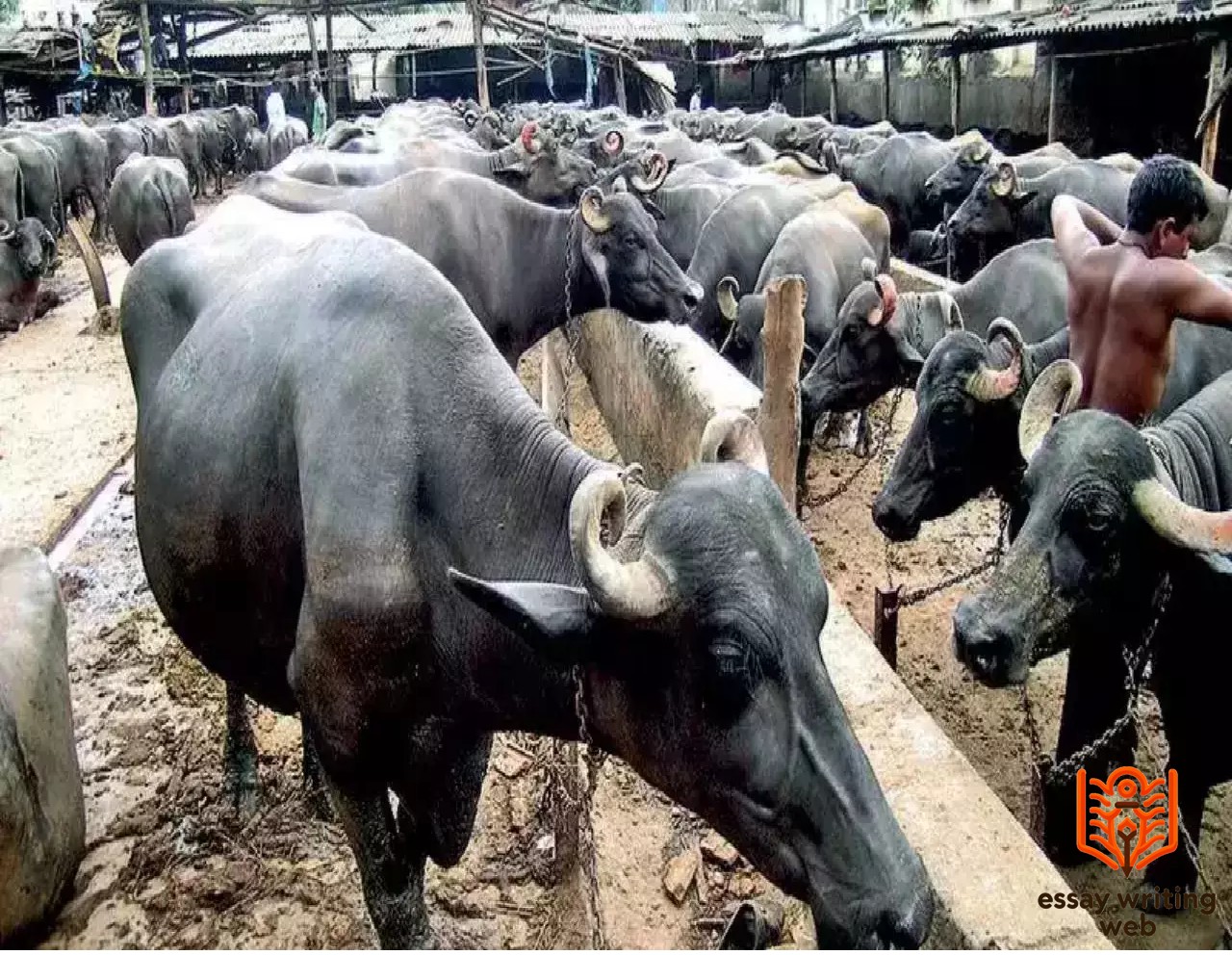
Buffaloes, particularly the indigenous breeds, are facing threats due to changing agricultural practices, urbanization, and climate change. Recognizing their economic and cultural significance, various efforts have been initiated worldwide to conserve these vital animals.
One of the primary strategies for buffalo conservation is the establishment of breeding programs aimed at preserving indigenous breeds. These programs focus on maintaining genetic diversity and promoting the characteristics that make local breeds resilient and productive. For instance, countries like India and Italy have initiated conservation projects that encourage farmers to raise traditional buffalo breeds, ensuring that these animals remain a part of the agricultural landscape.
Additionally, awareness campaigns play a crucial role in conservation efforts. Educating farmers and communities about the benefits of keeping buffaloes—such as their role in sustainable farming, their milk production, and their contribution to soil health—helps promote their importance. Workshops and training sessions on proper management practices further enhance the care and breeding of buffaloes, ensuring healthier populations.
Government policies also contribute significantly to buffalo conservation. Many countries have introduced subsidies and incentives for farmers who engage in sustainable buffalo farming. Financial support helps farmers transition to organic practices, which not only benefit the environment but also enhance the quality of milk and other products derived from buffaloes.
Moreover, collaboration between government agencies, non-governmental organizations, and research institutions has led to innovative conservation strategies. Research on disease management, nutrition, and breeding techniques informs farmers, enhancing the overall health and productivity of buffalo populations.
